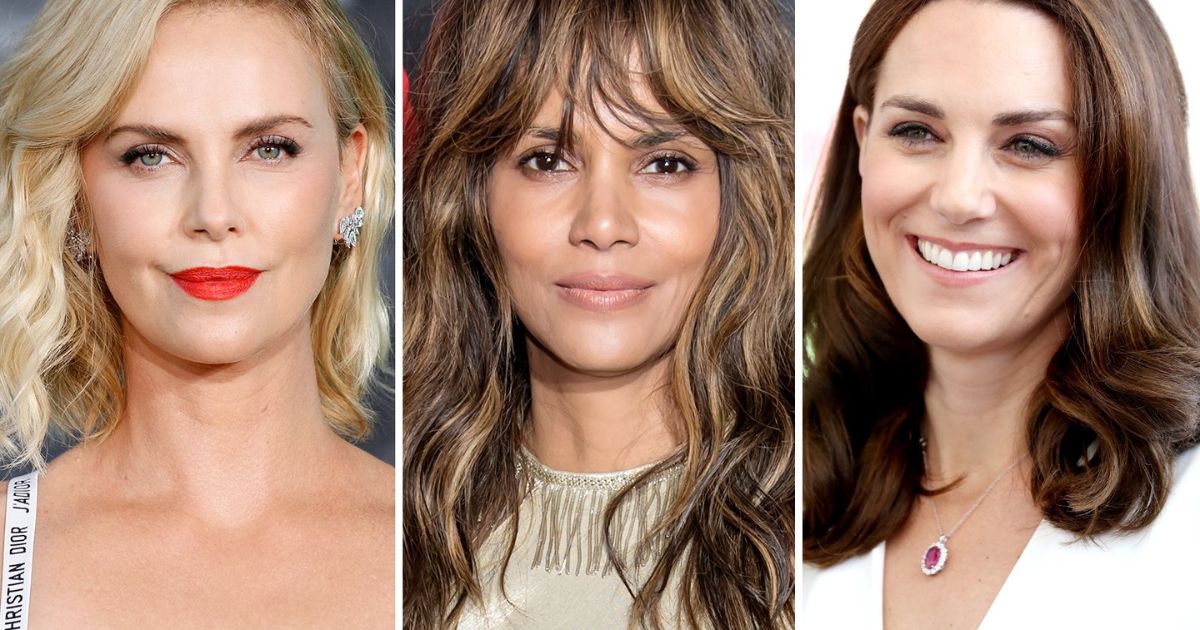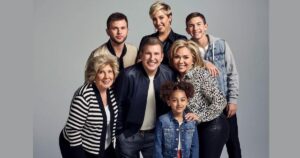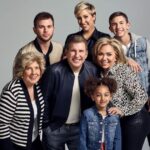Facial piercings can be a fun way to express your personal style. But choosing the right piercings to complement your face shape is key to creating a fashionable and harmonious look. In this guide, we’ll walk you through determining your face shape, recommendations for piercings for different face shapes, and aftercare tips to protect your new piercing.
The Art of Facial Piercings: An Introduction
Facial and ear piercings have become increasingly popular fashion statements over the past few decades. When done right, the addition of sparkling studs and rings can accentuate your natural features and truly make you stand out. But the key is choosing piercings that work with, not against, your unique facial proportions and bone structure.
There are so many options when it comes to piercings – from classic earlobe piercings to unexpected reaches of the face like the bridge or lips. Selecting the right ones for your face shape comes down to a combination of thoughtful placement, symmetry, and balancing your features. Beyond just personal style, the ideal piercings can enhance and harmonize your natural beauty.
In this guide, we’ll first cover the basics of determining your specific face shape. Then we’ll explore how different piercing styles can complement each shape for a cohesive and eye-catching look. We’ll also touch on proper aftercare to ensure your piercings heal properly and safely accentuate your appearance for years to come.
Face Shapes
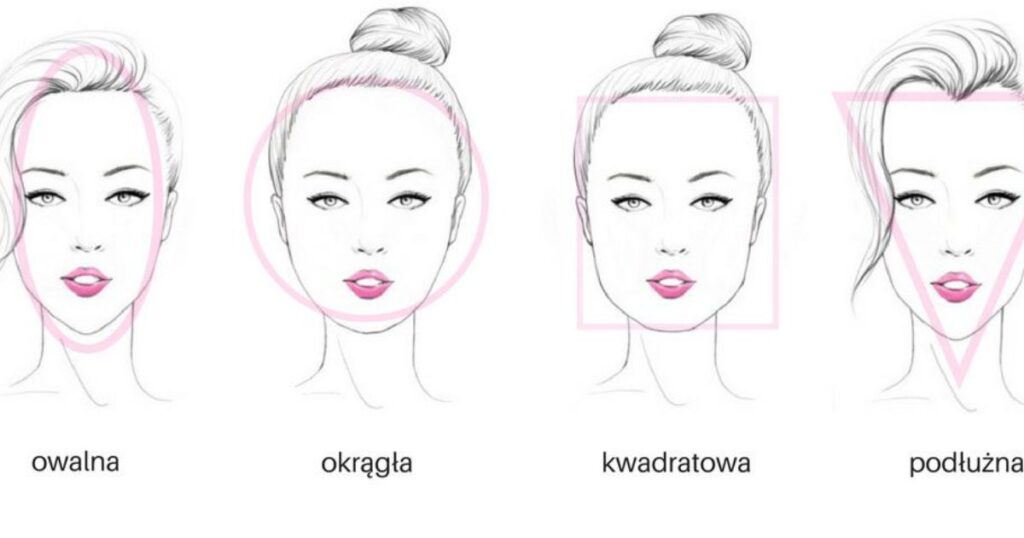
Identifying your face shape is essential for choosing the most flattering piercings. Just like with hairstyles and makeup, certain piercings work better with different facial structures.
The six most common face shapes are:
- Oval
- Round
- Square
- Heart
- Long
- Diamond
Your face shape depends on your bone structure – not features like fat distribution or musculature which can change over time. Properly determining your shape involves analyzing the size, width and contour of your forehead, cheeks, jawline and other structural aspects.
Once you know your shape, you can select piercings that enhance it rather than compete with it. For example, a septum piercing complements a longer face shape, while rounder faces are better suited to subtle nose studs. Read on to learn more about each shape and associated piercing suggestions.
Common Types of Face Shapes
Let’s explore the six most common face shapes and their distinguishing characteristics.
Oval Face Shape
Oval faces are characterized by their egg-like symmetrical shape. Forehead, cheeks and jawline are all approximately the same width. Oval faces have a slightly rounded hairline and jawline.
Popular piercings for oval faces include:
- Nostril
- Septum
- Labret
Round Face Shape
As the name implies, round faces have a circular, rounded shape. The width of the forehead, cheeks, and jawline are all approximately equal. Round faces lack sharp angles found in other shapes.
Ideal piercings for round faces:
- High nostril
- Helix
- Tragus
Square Face Shape
Square faces have a strong jawline, wide forehead, and straight hairline with sharp 90-degree angles. The width of the forehead, cheeks, and jawline are nearly identical.
Flattering piercings for square faces include:
- Septum
- Daith
- Anti-eyebrow
Heart Face Shape
Heart shaped faces have a wide forehead and cheekbones that taper down to a pointed chin. The forehead is wider than the jawline. Heart faces have a rounded hairline and jawline.
Piercings that work well with heart faces:
- Nostril
- Conch
- Vertical labret
Long Face Shape
Long faces are lengthier than they are wide. They have a sizable distance between the hairline and chin with a narrow forehead, cheekbones and jawline.
Piercings that complement long faces:
- Septum
- Nostril
- Helix
Diamond Face Shape
Diamond faces have narrow forehead and jawlines with wider, high cheekbones as the widest point. Diamond faces have elegant, angular features.
Flattering piercings for diamond faces:
- High nostril
- Septum
- Tragus
Now that you’re familiar with the basic face shapes and structures, it’s time to determine which one describes you.
How to Determine Your Face Shape
Figuring out your specific face shape is essential for choosing the most harmonious piercings. Here’s a simple process to identify yours:
- Pull your hair back and stand facing a mirror in natural light.
- With a dry erase marker, trace the outline of your face directly on the mirror. Include your hairline, jawline and facial contour.
- Step back and analyze the proportions. Use the descriptions above to decide if your face aligns with oval, round, square, heart, long or diamond.
- Look at the width of your forehead compared to your jawline – wider foreheads are heart shaped, while equal widths indicate oval or round.
- Check the angles of your jaw and hairline – sharp angles mean square, while soft rounded edges signal oval or round.
- Notice if certain features like cheekbones seem wider or more pronounced. This can identify diamond and heart shapes.
- Ask a trusted friend for their objective input if you’re torn between two possible shapes.
Determining your accurate face shape takes some care and perspective. But once you identify it, you can start selecting piercings that align with your natural features.
The Connection Between Face Shapes and Piercings
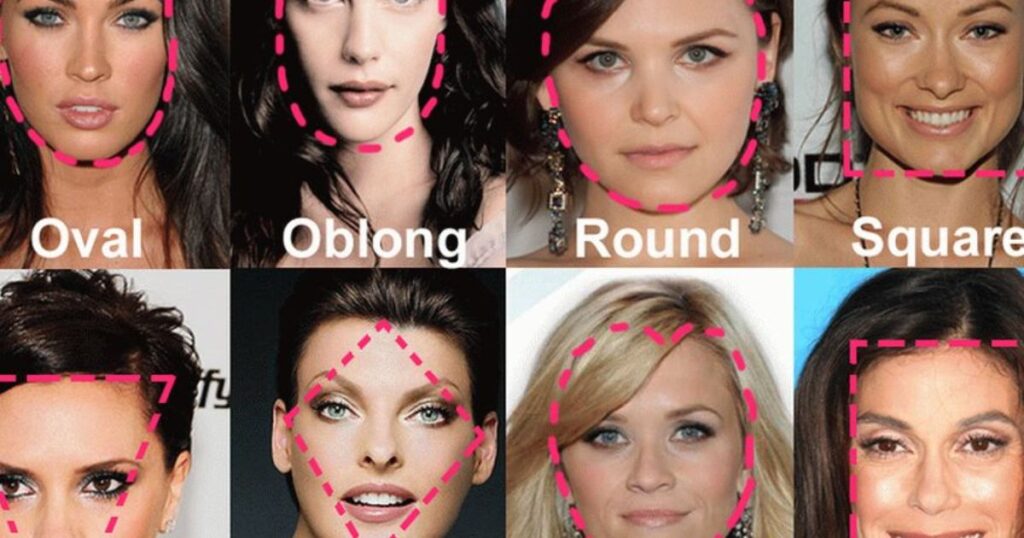
Now that you know how to determine face shape, let’s discuss why it’s so important for picking flattering piercings. Your facial dimensions play a key role in what piercings will complement or detract from your features. Certain placements draw the eye towards or away from areas you want to accentuate or downplay.
For example, round faces don’t suit wider septum piercings which add unnecessary width. But heart shapes can balance wide foreheads with vertical labrets drawing the gaze downward.
Facial symmetry is also critical for piercings. Nostril or lip rings look best when evenly aligned on both sides. Face shape impacts symmetry by dictating optimal stud placement.
Overall, your shape provides the contour and guidelines piercings should adhere to. The right piercings integrate seamlessly to enhance your natural proportions.
The Role of Facial Symmetry in Piercing Placement
Symmetry is a key factor for facial piercings to look cohesive and attractive. When piercings are uneven or unbalanced, they detract rather than accentuate. Your face shape impacts symmetry since it determines the ideal angle and placement for piercings to look even and proportional on both sides. Wider faces need wider-set piercings. Heart shapes require vertical alignment.
Always have your piercer carefully measure and mark both sides before piercing. And when in doubt, start with one side first to confirm placement before piercing the other side. Asymmetrical piercings disrupt facial harmony.
Balancing Facial Proportions with Piercings
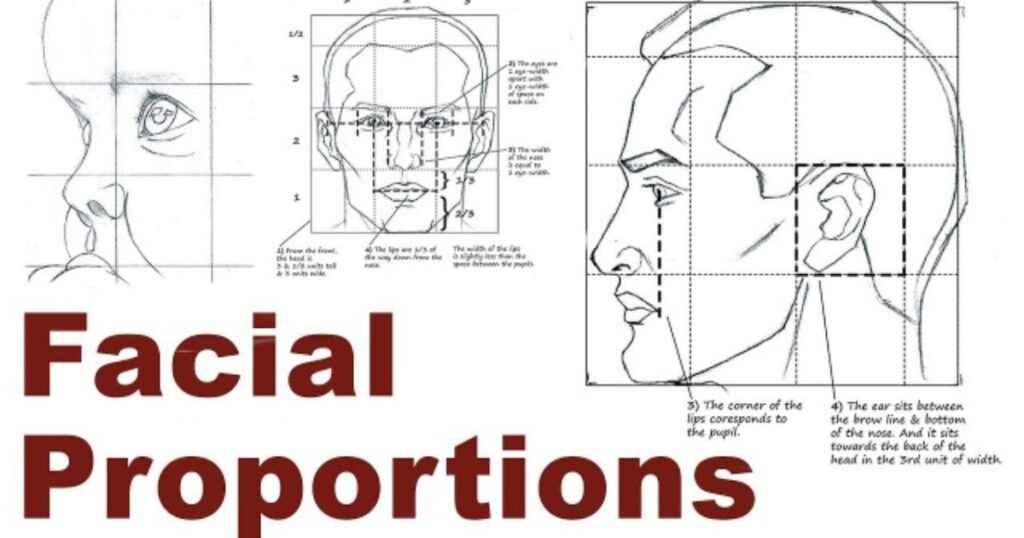
Certain piercings can also help balance facial proportions tied to your shape.
For example, long vertical labrets on heart-shaped faces draw the eye downwards to create the illusion of a less wide forehead.
Or high nostril piercings on round faces shift focus upwards to add height and length to soft, circular shapes. When selecting piercings, consider your shape’s proportions and how strategic studs or rings can improve balance and symmetry. The overall goal is integrating piercings into the natural contours of your face.
Detailed Guide to Piercings for Different Face Shapes
Now let’s explore specific piercing placements tailored to each face shape for the best results.
Piercings for Oval Face Shape
The balanced symmetry of oval shapes allows for centered facial piercings.
Nose Piercings
Nostril: Evenly placed nostril studs attractively accent the center of oval faces.
Septum: Subtle septum rings complement the fluid lines of oval shapes.
Ear Piercings
Helix: Symmetrical helix piercings nicely frame oval faces.
Lobe: Classic lobe piercings harmonize with oval shape.
Other Piercings
Labret: Centered labrets accentuate oval faces.
Lip: Balanced lip rings work with oval symmetry.
Piercings for Round Face Shape
Round faces should aim for piercings that add height and length.
Nose Piercings
High Nostril: Higher placed nostril piercings give the illusion of facial length.
Ear Piercings
Tragus: Tragus piercings draw the eye upwards.
Orbital: Orbitals on the upper ear add height.
Other Piercings
Vertical Labret: Vertically aligned labrets complement round shapes.
Piercings for Square Face Shape
Square faces suit symmetrical piercings that soften sharp angles.
Nose Piercings
Septum: Centered septum rings help balance square angles.
Ear Piercings
Daith: Daith piercings nicely fill space between angles.
Helix: Even helix piercings frame square face shape.
Other Piercings
Anti-Eyebrow: Strategic anti-eyebrow studs soften the jawline.
Lip: Symmetrical lip rings complement square shape.
Piercings for Heart Face Shape
Heart faces should aim for piercings that draw the eye downwards.
Nose Piercings
Nostril: Properly aligned nostril studs suit heart shapes.
Ear Piercings
Conch: Conch piercings focus attention lower.
Lobe: Lobe piercings placed low on the earlobe work well.
Other Piercings
Vertical Labret: Vertical labrets pull focus down towards the chin.
Monroe: A Monroe piercing complements the heart shape.
Piercings for Long Face Shape
Long narrow faces are ideal for piercings that add width and balance.
Nose Piercings
Septum: Centered septum rings add depth.
Nostril: Symmetrical nostril studs widen long face shapes.
Ear Piercings
Helix: Multiple helix piercings give the illusion of width.
Orbital: Orbitals placed parallel to face contours provide balance.
Other Piercings
Medusa: A Medusa piercing helps shorten a longer face.
Bridge: Bridge piercings subtly widen long face shapes.
Piercings for Diamond Face Shape
Diamond shapes should aim for piercings that accentuate the cheekbones.
Nose Piercings
High Nostril: High nostril piercings draw focus to the dramatic cheekbones.
Septum: A delicate septum ring compliments angularity.
Ear Piercings
Tragus: Tragus piercings direct attention inwards to the cheeks.
Helix: Helix rings placed high on the ear accent upward.
Other Piercings
Eyebrow: Strategic eyebrow bars highlight the eyes and upper cheek area.
Vertical Labret: Vertical labrets complement the diamond shape.
Piercings for Rectangle Face Shape
Rectangle faces look best with piercings that soften angles and add curves.
Nose Piercings
Septum: A rounded septum ring adds symmetry.
Nostril: Aligned nostril studs complement rectangle shape.
Ear Piercings
Rook: Rook piercings nicely fill in sharp angles.
Orbital: Curved orbitals soften rigid lines.
Other Piercings
Medusa: A Medusa piercing softens the jawline.
Vertical Labret: Vertical labrets draw attention to softer chin area.
Piercings for Triangle Face Shape
Triangle faces need piercings that add width and redirect focus upwards.
Nose Piercings
High Nostril: High nostril piercings widen and lift the midface.
Bridge: Bridge piercings add width between the eyes.
Ear Piercings
Helix: A helix cluster creates the illusion of width.
Orbital: Orbitals help make upper face appear wider.
Other Piercings
Eyebrow: Vertically aligned eyebrow bars draw eyes up.
Lip: Lip rings placed near mouth corners provide width.
Other Types of Face Piercings: Enhancing Your Aesthetic
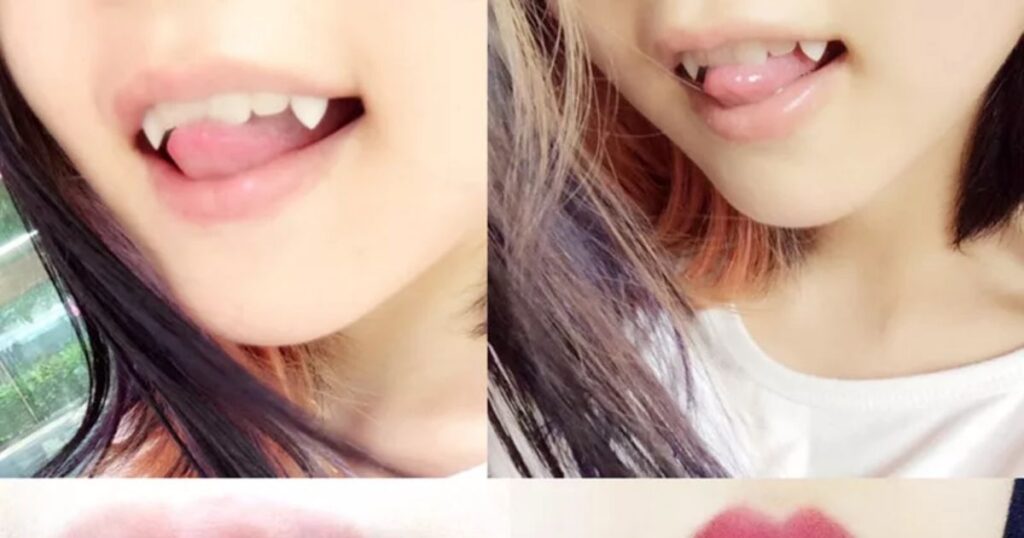
Beyond the common ear, nose and lip piercings, some additional facial punctures can take your look to the next level. These more subtle or unexpected piercings work best once you have mastered placements that complement your base face shape.
Some edgier but impactful face piercing options include:
- Tongue: Unexpected tongue studs when visible
- Chin: Strategic chin piercings that align with your shape
- Cheek: Piercings on the upper cheekbone beneath eyes
- Bridge: Piercings placed between the eyes on the bridge
- Anti-eyebrow: Punctures on the lower eyebrow ridge
Carefully selected and properly placed, these unconventional piercings can amplify your personal style and complement your facial features. Start with more traditional nose and ear piercings, then explore branching out once those foundations are set.
An experienced piercer can help determine advanced placements that work in harmony with your face shape for a bold yet symmetrical statement.
A Guide to Piercing Aftercare: Maintaining Your New Look
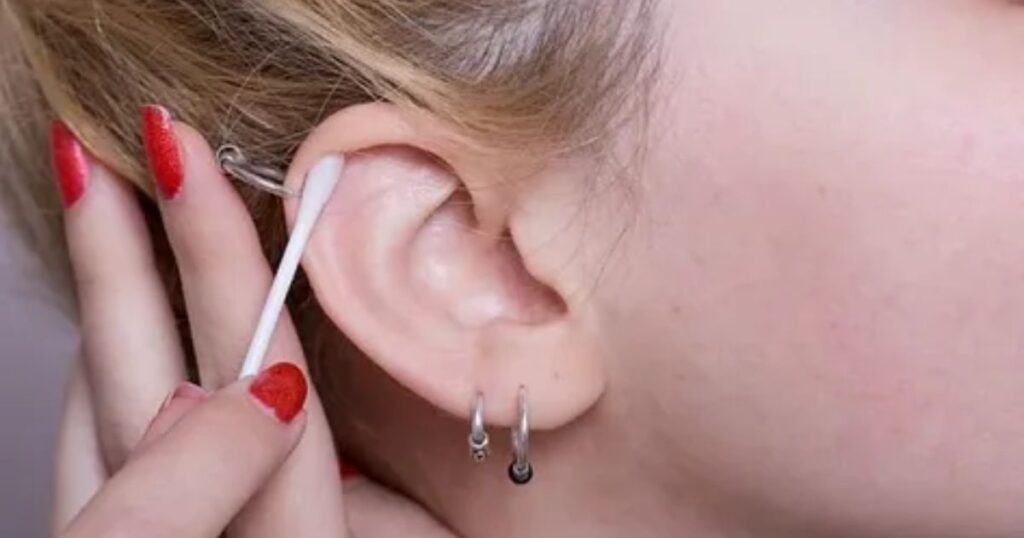
Getting a facial or ear piercing is just the first step – proper aftercare is crucial for healing and long-term results. Here are some tips for cleaning, protecting and maintaining your new piercing.
Piercing Healing Process
Understanding the stages of piercing healing helps you care for it properly during recovery.
What to Expect
- The first phase is inflammation and tenderness lasting around 2 weeks as the wound seals shut.
- Next is growth of new tissue over 2-3 months as collagen forms around the piercing.
- Final maturation and toughening of the piercing site can take upwards of 6+ months.
Potential Problems
- Infection: Redness, swelling, pus signal infection requiring antibiotic treatment.
- Rejection: Piercings may be rejected by the body, requiring prompt removal.
- Migration: Piercings slowly moving from original placement.
- Scarring: Permanent thick scar tissue forming around site.
Healing time depends on piercing location, your body, and proper aftercare. Patience is required.
Cleaning and Maintaining Your Piercing
To help new piercings heal cleanly and minimize risks, follow these care tips:
Recommended Products
- Sterile saline spray or saltwater soaks help clean piercings.
- Avoid ointments which can trap bacteria.
Dos and Don’ts
- DO gently clean piercings twice daily with saline.
- DO dry piercings thoroughly after cleaning.
- DO avoid touching piercings excessively.
- DON’T rotate piercings until fully healed.
- DON’T use alcohol, peroxide, soap or makeup on piercings.
Proper piercing aftercare establishes healthy tissue and secures your new embellishments for the long term. Be diligent and patient during the healing process.
FAQ’s
What piercing should I get according to my face?
Consider your individual face shape and use this guide to determine which piercings will best complement your natural facial structure and proportions.
What is the most flattering piercing?
There is no single “most flattering” piercing that works for everyone. The most flattering piercings are ones carefully selected to align with your specific face shape.
What is the best piercing for a round nose?
For a round nose, an appropriately sized and positioned septum piercing can look quite flattering by accentuating the natural shape.
Where is the best nose piercing for a round face?
A high nostril piercing is often most flattering on a round face shape, as it adds length to balance facial fullness.
How do I know if a nose piercing will suit me?
Getting a stud that complements your nose size along with considering your face shape will help determine if a nose piercing flatters you. Try a fake stud first to preview the look.
How do you know if a piercing will suit you?
Beyond face shape, also consider your lifestyle, ability to care for new piercings, workplace policies, and personal style preferences when deciding if a facial piercing will suit you. Discuss options with a reputable piercer.
Conclusion
Selecting facial piercings tailored to your unique face shape helps create a fashionable, harmonious aesthetic. Analyze your facial structure, proportions and symmetry to determine placements that enhance your natural features. While personal style plays a role, the most flattering piercings strategically complement the shapes of your face. With proper aftercare and maintenance, your new piercings can become an elegant part of your look for years to come.
Further Reading for Piercing Enthusiasts:
